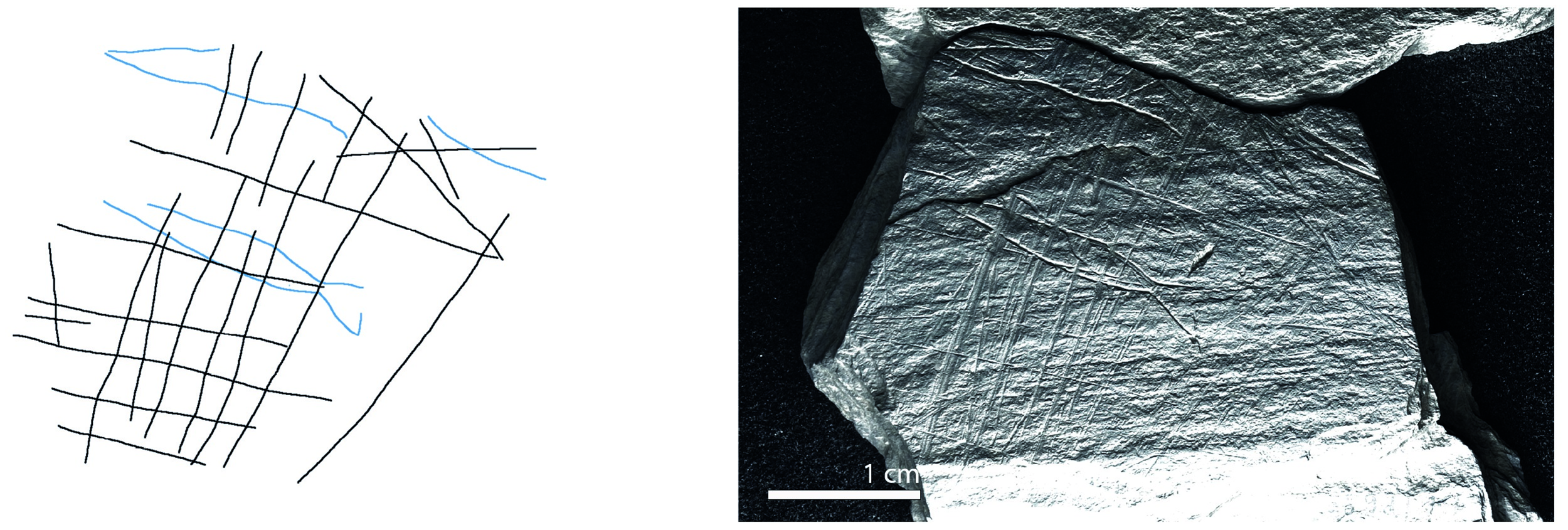Engravings from nearly 16,000 years ago peel back the curtain on ancient European society
Hundreds of stones found with etchings reveal practices of the Stone Age Magdalenians
Researchers are learning more about ancient central European society thanks to stones from thousands of years ago.
A team of international scientists analyzed markings made on more than 400 stone plaquettes that date back 15,800 years, and uncovered something not previously known during the final period of the Stone Age. The stones were etched with depictions of ancient fishing practices that had not been recorded in the Upper Paleolithic era, revealing that people used nets to catch fish.
The ancient artifacts were found at the German Gönnersdorf site, which is one of two major Magdalenian settlements in western Germany’s Central Rhineland. The Magdalenians are recognized as hunters and artists, and produced cave paintings with bison and engravings and etchings of headless female forms. They were uncovered on the northern bank of the Rhine River and had been protected by volcanic ash.
While fishing likely played a role across many societies in this age, direct artistic depictions of the activity are rare. Fish bones had been found across various locations, indicating that it was a significant part of their diets.
“Interestingly, until this discovery, no direct depictions of net fishing had been identified in Paleolithic art,” Dr. Jérôme Robitaille told The Independent on Tuesday. “This depiction marks Gönnersdorf as the only known Upper Paleolithic site in Europe, and possibly worldwide, that visually represents net fishing practices.”
His work was published Wednesday in the journal PLOS ONE.

While fish had been identified among the engravings on these plaquettes, these scientists used an advanced imaging technique to find an additional seven plaquettes with fish or lemon-like shapes. All seven new fish are depicted in association with lines arranged in grid-like patterns, in addition to a fish that had been previously identified.
The researchers used something called Reflectance Transformation Imaging to examine the plaquettes, which is technology that allows the researchers to analyze surface details with precise clarity and reveals intricate linework that was previously hard to detect. Robitaille said he had developed a special method under a microscope that allows for an even more detailed analysis of the engravings.
“While these engravings depict fishing nets and fish, the minimalist and abstract style — emphasizing essential geometric shapes over detailed realism — suggests that the focus may not have been solely on fishing as a subsistence activity,” Robitaille explained. “Instead, it likely represents the cultural or symbolic significance that fishing held within Magdalenian society.”
Net fishing may have had a communal or ritualistic role in the community. Nets typically require more people to set them up and operate them. Their use could be representative of values, beliefs, or shared experiences among the Magalenians.
“It’s also possible that net fishing involved coordinated effort, perhaps planned around seasonal migrations of fish or specific environmental conditions, fostering shared responsibility and resource distribution among group members,” he said.
Join our commenting forum
Join thought-provoking conversations, follow other Independent readers and see their replies
Comments
Bookmark popover
Removed from bookmarks